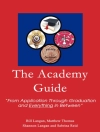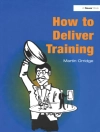The
Second Edition of
Situational Analysis: Grounded Theory After the Interpretive Turn offers an innovative extension of grounded theory useful in qualitative research projects that draws on interviews, observations, and visual, narrative, and historical discourse materials. To engage the dense complexities of real world situations, Situational Analysis (SA) braids together Strauss′s ecological social worlds/arenas theory, Foucault’s discourse analysis, and Deleuze and Guattari’s rhizomes and assemblages. In SA, the situation itself becomes the fundamental unit of analysis. Using extensive examples, the authors discuss getting started, how to create three kinds of maps emphasizing differences and relationality (situational maps, social world/arena maps, and positional maps), the kinds of analytic work they accomplish, and how to write up the results centered on the distinctive strengths of the method. The book will serve as an invaluable resource for advanced undergraduate and graduate-level students, as well as professional researchers and consultants from diverse backgrounds pursuing qualitative projects.
Tabela de Conteúdo
List of Illustrations
Acknowledgments
Prologue to the Second Edition
What is Situational Analysis?
Overview of the Second Edition
Practical Developments
How to Read and Use this Book
About the Authors
PART I • FRAMING AND GROUNDING SITUATIONAL ANALYSIS
Introduction to Part I
Chapter 1 • Situational Analysis: Grounded Theory Mapping After the Interpretive Turn
What Is Grounded Theory?
A Genealogy of Grounded Theory and Situational Analysis
The Interpretive Turn
Grounds for a New Method
Situational Maps and Analysis
Reflections and Anticipations
Chapter 2 • Methodological Grounds of Situational Analysis
Grounded Theory, Pragmatism, and Interactionism: A Theory/Methods Package
Grounded Theory as Always Already Around the Interpretive Turn
Grounded Theory as Recalcitrant Against the Interpretive Turn
Pushing Grounded Theory Around the Interpretive Turn
Reflections and Anticipations
Chapter 3 • Theoretical Grounds of Situational Analysis
The ”(Re)Turn to the Social” Across Social Theory
Pragmatist Interactionist Origins: From Chicago Ecologies to Social Worlds/Arenas
New Grounds I: Foucault and the Pragmatist Interactionist Project
New Grounds II: Taking the Nonhuman Explicitly Into Account
New Grounds III: Deleuze and Guattari’s Rhizomes and Assemblages
Assembling the Theoretical Grounds of Situational Analysis
PART II • DOING SITUATIONAL ANALYSIS
Introduction to Part II
Chapter 4 • Getting Started: Practical Issues and Project Design
The Three Kinds of Situational Analysis Maps
Practical Issues in Getting Started
Doing Situational Analysis Project Design
Issues in Situational Analysis Project Design
Technical Tools Supporting Situational Analysis
Turning to Analysis
Chapter 5 • Doing Situational and Relational Maps
Abstract Situational Maps
Introducing the First Exemplar: Bone’s Project
Situational Maps of Bone’s Project
Doing Relational Analyses With Situational Maps
Relational Maps of Bone’s Project
Final Comments on Situational and Relational Maps
Chapter 6 • Doing Social Worlds/Arenas Maps
What Are Social Worlds and Arenas?
Why Are Social Worlds and Arenas Analytically Important?
Introducing Social Worlds/Arenas Maps
Social Worlds/Arenas Map of Bone’s Project
Doing Social Worlds/Arenas Maps
Memoing Social Worlds/Arenas Maps
Using Social Worlds/Arenas Maps in Your Project
Final Comments on Social Worlds/Arenas Maps
Chapter 7 • Doing Positional Maps
Abstract Positional Maps
Positional Maps of Bone’s Project
Constructing Your Own Positional Maps
Articulating and Acting Upon Absent Positions
Why Are Positional Maps So Important?
Final Comments on Positional Maps
Chapter 8 • A Fully Worked Exemplar of Situational Analysis
Introducing Alonso-Yanez’s Project
Alonso-Yanez’s Situational Maps
Alonso-Yanez’s Relational Maps
Alonso-Yanez’s Social Worlds/Arenas Map
Alonso-Yanez’s Positional Maps
Provisional Conclusions on Alonso-Yanez’s Project
Chapter 9 • Writing It Up: Final Presentations and Project Maps
Writing It Up as an Analytic Process
Using Your Memos in Finalizing the Project
Turning Situational Analysis Maps Into Final Project Maps
Possibilities for Presenting and Publishing Your SA Project
Temporary Conclusions
PART III • MAPPING EXTANT DISCOURSE MATERIALS
Introduction to Part III
Chapter 10 • Turning to Discourses
What Is Discourse?
Why Analyze Discourses?
Turning Up the Volume on “Minor” Discourses
Single Site and Multisite Approaches
How to Design SA Discourse Projects
Turnings
Chapter 11 • Mapping Narrative Discourse Materials
Kinds of Extant Narrative Discourse Materials
Designing a Narrative Discourse Project
Doing Situational Maps of Narrative Discourse Materials
Doing Social Worlds/Arenas Maps of Narrative Discourse Materials
Doing Positional Maps of Narrative Discourse Materials
Final Comments: Situational Analysis of Narrative Discourse Materials
Chapter 12 • Mapping Visual Discourse Materials
The Rise of Visual Cultures
Doing Situational Analysis of Visual Discourse Materials
Visual Discourse Exemplar: Washburn’s Biomonitoring Project
Final Comments: Situational Analysis of Visual Discourse Materials
Chapter 13 • Mapping Historical Discourse Materials
Historicizing Historical Approaches
Designing Historical and Historicizing Projects
Historical Discourse Analysis Exemplar: Introducing Message’s Project
Doing Situational Maps of Historical Discourse Materials
Doing Social Worlds/Arenas Maps of Historical Discourse Materials
Doing Positional Maps of Historical Discourse Materials
Final Comments: Situational Analysis of Historical Discourse Materials
Epilogue: Situational Analysis Issues and FAQs
Comparing Early GT With Constructivist GT and SA
Tips on Learning and Teaching Situational Analysis
Decolonizing and (Post)Colonial Situational Analysis
SA Mapping as Facilitating Engagement and Collaboration
FAQs About Situational Analysis
Final Words
Appendices
Appendix A: Grounded Theory and Situational Analysis Websites
Appendix B: Selected Exemplars of Situational Analysis by Discipline
Appendix C: Selected Exemplars of Situational Analysis by Mapping Focus
References
Index
Sobre o autor
Rachel Washburn (Ph D) is associate professor of Sociology at Loyola Marymount University in Los Angeles. She used situational analysis in her doctoral research on the politics of human biomonitoring and has continued to do so in subsequent research on the same topic. Her dissertation, Measuring the Chemicals Within: The Social Terrain of Human Biomonitoring in the United States, was awarded the Anselm Strauss Outstanding Qualitative Dissertation Award in 2009. She has given talks and workshops on situational analysis at universities in the United States and Canada. Her current research examines the politics of mid-20th-century science related to the human health effects of pesticides.












